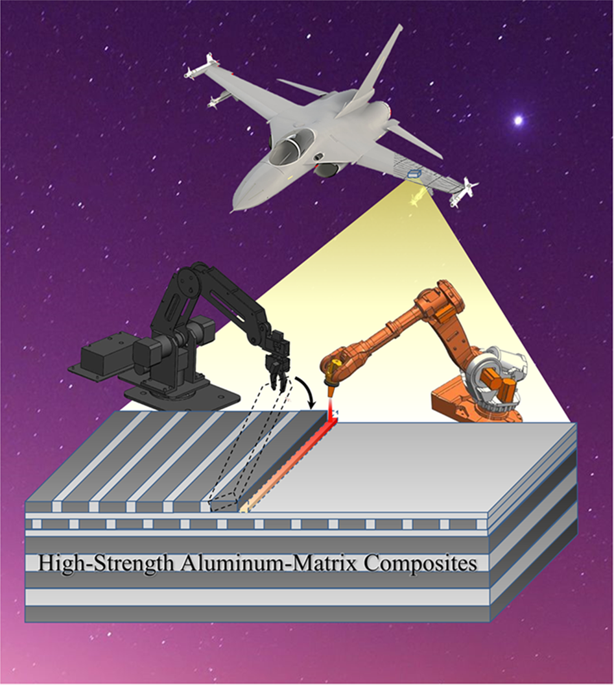NPG Asia Materials ( IF 9.7 ) Pub Date : 2019-11-29 , DOI: 10.1038/s41427-019-0174-2 Chenwei Shao , Shuo Zhao , Xuegang Wang , Yankun Zhu , Zhefeng Zhang , Robert O. Ritchie

|
As important lightweight structural materials, cast aluminum alloys have been largely used in the transportation and aerospace industries. In general, Al–Si-based alloys comprise more than 90% of all castings due to their excellent castability and corrosion resistance. However, even though various reinforcements have been introduced, the strength of these alloys is not that high, which severely limits their use for certain high-performance applications. Here, we report on a new strategy and technology to reinforce Al–Si alloys to increase their yield strength into the ~400–660 MPa range, a level that is 29–113% higher than that of all current cast Al–Si alloys, laboratory or commercial, and comparable to that of many high-strength steels but with ~40% lower density. By introducing continuous Ti–6Al–4V reinforcements into the Al–Si matrix through a novel microcasting process, the yield strength of the resulting alloy can be enhanced to between 4 and 6 times higher than that of the pure Al–Si alloy. The extraordinary reinforcing effect originates from the occurrence of multiscale strengthening mechanisms, including macroscale compound strengthening (the rule of mixtures amended by crack arrest mechanism), mesoscale strain-gradient strengthening, and microscale interface-affected-zone and nanoparticle strengthening. The core principle of our material design is to make all components of the composite fully participate in plastic (compatible) deformation, and thus, continuous reinforcements, instead of discrete reinforced structures (e.g., particles, whiskers, and short fibers), were introduced into the Al–Si alloy. Combined with 3-D printing technology, the present microcasting process can realize strengthening at the designed position by architecting specific reinforcements in the matrix.
中文翻译:

新型微铸技术处理的高强度铝基复合材料的体系结构
作为重要的轻质结构材料,铸造铝合金已广泛用于运输和航空航天工业。通常,由于铝硅基合金具有出色的可铸性和耐蚀性,因此它们占所有铸件的90%以上。但是,即使已经引入了各种增强材料,这些合金的强度也没有那么高,这严重限制了它们在某些高性能应用中的使用。在这里,我们报告了一种增强Al-Si合金以将其屈服强度提高到约400-660 MPa范围的新策略和技术,该水平比所有当前铸造的Al-Si合金高29-113%,实验室或商业用途,可与许多高强度钢媲美,但密度低约40%。通过采用新颖的微铸工艺将连续的Ti-6Al-4V增强材料引入Al-Si基体,可以将所得合金的屈服强度提高到纯Al-Si合金的4至6倍。非凡的增强效果源自多尺度增强机制的出现,包括宏观复合增强(通过裂纹阻止机制修正混合物的规则),中尺度应变梯度增强以及微观尺度界面影响区和纳米粒子增强。我们材料设计的核心原则是使复合材料的所有组件充分参与塑性(相容)变形,因此,连续增强而不是离散的增强结构(例如,颗粒,晶须和短纤维),被引入到Al-Si合金中。结合3-D打印技术,当前的微浇铸过程可以通过在矩阵中构造特定的钢筋来实现在设计位置处的钢筋。



























 京公网安备 11010802027423号
京公网安备 11010802027423号